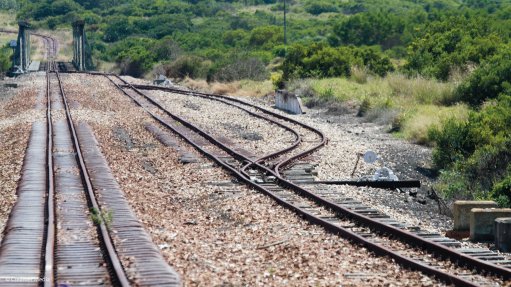
Photo by: Duane Daws
Hoping to dispel the notion that a landlocked country is largely disadvantaged by the insular nature of its borders, Zambian High Commissioner to South Africa Muyeba Chikonde has outlined the country’s plans to establish itself as a regional trade hub that is highly accessible by its neighbours, development-focused and a driver of intraregional trade and cross-border infrastructure projects.
Noting that the current African “war” was not about politics, but rather about economics, the former architect told a Nedbank-New Partnership for Africa's
Development networking forum on Tuesday that the country was strategically located to serve as a link between neighbouring East and West African States, such as Angola and Mozambique.
“When I was younger, I was told that Zambia was landlocked and this was a bad thing, as it limited movement. But we can turn that into an advantage [by enabling trade movement if we] improve our road and rail infrastructure,” he commented.
Chikonde added that Zambia provided access to two important trade regions – the Common Market for Eastern and Southern Africa, which boasted a gross domestic product (GDP) of $508-billion and the Southern African Development Community (SADC), with a GDP of some $575.5-billion.
“Zambia borders eight SADC countries,” he remarked.
To enhance its regional trade hub status, the country was currently advancing its Sixth National Development Plan (SNDP), which covered the period between 2011 and 2015 and was aligned to the country’s longer-term objectives, which included the creation of a prosperous, middle-income country by 2030.
The plan outlined the need for an improved road and rail transport network, bolstered by modern aircraft facilities and characterised by a reduction in bureaucracy and red tape.
Among this suite of projects was the ambitious $5.8-billion Link Zambia 8 000 plan, which envisioned the construction of 8 000 km of high-quality single- and dual-lane roads throughout the landlocked country.
Zambia had also outlined its intention to develop various inland ports and logistics centres at Chipata, in the east of the country, and the northern town of Kapiri-Mposhi, which boasted a railway hub connecting the country’s capital, Lusaka, to Dar es Salaam, in Tanzania.
The country’s three international airports were also currently undergoing refurbishment and upgrading.
WOOING CAPITAL
Elaborating that “government wants to open up Zambia”, Chikonde said the State, through the Zambian Development Agency (ZDA), had developed a suite of incentives for foreign investors.
The ZDA was established to serve as a single entry point of investment for the prospective capital holder, providing information on the country’s markets and company registration support, as well as assisting the company to find a local partner and a viable, investable project.
Among these incentives was a corporate tax rate of 0% for five years following the first profitable year of an investment greater than $250 000.
Thereafter, in years six to eight, only 50% of the investment’s profits would be taxed, while 75% of profits would be taxed in years nine and ten.
In addition, companies would enjoy a five-year exemption on dividend taxes following the year of first declaration and a five-year exemption on imported machinery and equipment.
“Moreover, Zambia offers an unlimited repatriation of profits and no exchange controls, which were abolished in 1994. There are no restrictions on the repatriation of interest, profits, dividends, management fees, technical fees and royalties,” Chikonde outlined.
Zambia – the world’s seventh-largest copper producer – was the continent’s fifth-fastest growing economy, boasting GDP growth of 6.6% in 2013 and anticipated growth of 7.8% for 2014.